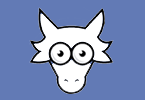You’ve probably heard of internal conflict and external conflict, or the three (or four) different types of conflict. But what is conflict in a story, really?
At its core, conflict is a collision of two opposing wills.
This collision can be in action, in speech, in decisions, in thoughts, in feelings, in any way your characters can express themselves. Everything that has to do with this collision of wills is part of the conflict. Conflict can be physical, emotional, or theoretical (the clash of ideas). It can be a tiny act or a worldwide war.
Different Types of Conflict
(Quick note: “vs” stands for “versus”, or “against”.)
If I have a cookie, and I want to eat it, but I also don’t want to gain weight by eating it, that’s internal conflict, or man vs self. I have two conflicting wishes, and they will drive me to some action: eating the cookie or putting it away.
If I want your cookie, and you don’t want to give me your cookie, that’s external conflict. In fact, that’s inter-personal conflict, or man vs man. My wish clashes with your wish, and we might exchange hard words and even blows over that cookie. (Kidding. I’d just steal it when you’re not looking.)
If I make cookies, and it’s against the law or the norms of society to make cookies, that’s also a form of external conflict. It’s man vs society. My wish collides with the wish of the social structure, or the government, or religion, or even local customs. I could start an uprising in favor of eating cookies legally.
If I make cookies and forget the oven on, and my house catches fire with me trapped inside, that’s conflict. Wait, what? What two wills are clashing here? Well, we can say the fire has a will: to destroy me and my house. My own will is to save my house, or at least to survive. That’s conflict. It’s man vs nature.
What is Conflict in a Story and How Does it Work?
Your story must include some form of conflict. Why? Because otherwise, nothing happens.
Without conflict, your character has no reason to change. Only when faced with conflict, do choices become necessary and meaningful. Conflict drives the story forward because it gives your character a chance to transform. And any real story is a story about change.
Whenever you feel your story is slowing down, try charging it up with conflict.
For example, imagine Character A needs to get some information from Character B in order for the plot to continue. Sure, B can simply tell A everything. But that would be a boring chunk of dialog without any conflict.
Instead, insert inter-personal conflict. What if B doesn’t want to tell A? What if A must get that information against B’s will?
Now you have Character A in a quandary. What to do? Appeal to B’s good nature? Torture B for the information? Try to ferret it out through deceit? Character A’s choice in this matter will shape their personality and make them evolve as a character. It will also impact their relationship with B.
Instant conflict, instant interest.
Ready to try it on your own? Choose your conflict type, grab a couple of characters, assign clashing wills, and have fun!




